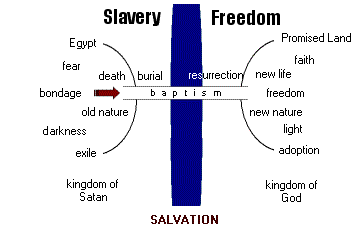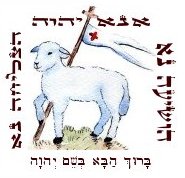|
THE STORY GOES BACK TO THE VERY BEGINNING, to the orchard of Eden itself, when Adam and Eve disobeyed God and ate from the forbidden tree. Because of their transgression, our original ancestors incurred the plague of death and were exiled from the Divine Presence, though God graciously promised to heal them through the coming Seed of the woman – the Savior who would crush the head of the serpent and break the fangs of his venomous sting (Gen. 3:15). Soon after making this great promise, God clothed our original parents with the skin of a sacrificed lamb (Gen. 3:21), linking their coming deliverance with the "Lamb of God slain from the foundation of the world" (1 Pet. 1:18-20). The very first "Passover" was in the garden.
The great story of our redemption is revealed on two levels in Scripture - one that concerns the paradise of Eden (the universal level), and the other that concerns the paradise of Israel (the particular level). Therefore Yeshua is both rightly called the "Lamb of God who takes away the sins of the world" (John 1:29) and "the Messiah our Passover Lamb who has been sacrificed for us" (1 Cor. 5:7). Likewise he is both called the "Seed of the woman," and "the Son of David"; the "Second Adam," and the "King of the Jews," and so on.
The story of Israel's redemption in Egypt therefore serves as an allegory of both the universal salvation promised in Eden (i.e., the lamb slain from the foundation of the world) as well as the revelation of the sacrificial ministry of Yeshua as Israel's promised Messiah. Yeshua is both the Savior of the world as well as Israel's true King and Deliverer.
Just as it was through Eve's doubt in God's goodness that Satan gained his advantage, so it was through Eve's teshuvah (repentance) that she would find salvation. And just as it was through Adam's sin that the plague of death came into the world, so it was through Yeshua's sacrificial death that life and healing would come. Yeshua was "bruised" through his sacrifice on the cross, but through it he crushed the head of the serpent and broke the fangs of his venomous sting. Access to the Tree of Life is now available in the renewed paradise of God. Yeshua is the Savior of the world and the One who rebuilds the fallen tabernacle of Eden.
Looked at from another perspective, Egypt represents the world system that enslaves people (the word mitzrayim comes from the word tzur (צוּר), meaning "restriction"). As the ruler of this world, Pharaoh therefore represents Satan, the original serpent who deceived Eve in the orchard. Egypt therefore represents a state of exile (similar to the original exile from Eden), and just as the blood of the lamb applied to the doorposts in Egypt caused the plague of death to pass over, so the blood of Yeshua saves us from the wrath of God and spiritual death. Yeshua said that by nature people were in bondage to the dictates of this world system and its forces and needed to be set free. The Hebrew word for salvation (יְשׁוּעָה) means to be set free from the restrictions of "Egypt" and its forces.
The Apostle Paul likened the crossing of the sea as a metaphor of baptism: "All were baptized into Moses in the cloud and in the sea" (1 Cor. 10:1-2,11). In the New Testament, baptism symbolizes our identification with Yeshua's death, burial, and resurrection (Col. 2:12; Rom. 6:3-5). Some Christian commentators make a strong distinction between these two baptisms (i.e., baptism into Moses and baptism into Messiah), though there are many profound correspondences. For instance, the Israelites were facing death and were therefore at the "end of themselves." They had no other appeal or hope than God's gracious intervention on their behalf (i.e., salvation). Still, they needed to act and move forward. After they took the step of faith, they could see the Shekhinah Glory lighting up the way of deliverance, though this meant being "buried" within the midst of the sea. Their earlier fear of death was replaced with a song of God's great deliverance. The other side of the sea represented new life, the life that comes from above, by the power and agency of the Holy Spirit... The Israelites died to their old life, were symbolically buried in the waters, but rose to new freedom by the grace and power of God... Shifting the analogy somewhat, the crossing of the sea represented a sort of "birth canal" into the realm of true freedom as God's redeemed children.
 |
Just as the Israelites were made free from the tyranny of Pharaoh when they crossed the Sea - being "baptized into the death of the waters" to be reborn to serve God in freedom – so those who trust in Yeshua are "baptized into His death" and reborn to serve God by the power of the Holy Spirit.
Hebrew Lesson
Revelation 5:12 reading (click):
|




